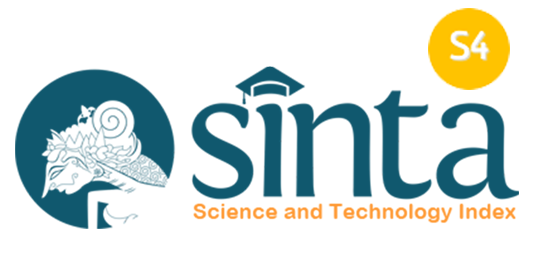Analysis on Growth Pattern and Economic Sectors in Bali Province
DOI:
https://doi.org/10.35384/jime.v11i2.141Keywords:
Regional Economics, Economic DevelopmentAbstract
In decentralization system, understanding the characteristics of region’s economy becomes necessary for productivity. In that regard, this descriptive study aims to describe the characteristics of the local economy in Balinese regencies and to identify the potential sectors to be developed therein. Using such methodologies as Klassen Typology, Location Quotient, Growth-Ratio Model, and Overlay analysis from year 2010 to 2016. As a result, we have found significant gap amongst regencies, where Badung and Denpasar are the most developed regencies, with high level both in growth rate and GDP per Capita. On the other hand, Klungkung, Jembrana, Bangli, Karangasem, and Tabanan are the least developed. Furthermore, it was found that most sectors in Bali are experiencing slow growth during the research period. By studying all the regencies in Bali province, this study not only enrich the existing literature but also recommend potential sectors from each region to be developed in order to reduce the development gap between regencies.
Downloads
References
Andriyani, N. N., & Utama, M. (2015). Analisis Pusat Pertumbuhan di Kabupaten Ka-rangasem. E-Jurnal Ekonomi Pembangunan Universitas Udayana , 220-229.
Antara, M., & Sumarniasih, M. (2017). Role of Tourism in Economy of Bali and Indonesia. Journal of Tourism and Hospitality Manage-ment, 34-44.
Arsyad, L. (1999). Pengantar Perencanaan dan Pembangunan Ekonomi Daerah. Yogyakarta: BPFE-Yogyakarta.
Bank Indonesia. (2016). Kajian Ekonomi dan Keu-angan Regional Provinsi Bali. Kantor Per-wakilan Bank Indonesia Provinsi Bali.
Cole, S. (2012). A Political Ecology of Water Equi-ty and Tourism A Case Study from Bali. An-nals of Tourism Research, 1221-1241.
Darmajaya, I. P., Suryawardani, I., & Ambarawati, I. (2018). Eksistensi Sektor Pertanian dalam Struktur Perekonomian Kabupaten Bangli. E-Jurnal Agribisnis dan Agrowisata , 202-211.
Emilia, Syaifuddin, & Nurjanah, R. (2012). Ana-lisisTipologi Pertumbuhan Sektor Ekonomi Basis dan Non Basis dalam Perekonomian Propinsi Jambi. Jurnal Paradigma Ekonomi-ka.
Erawati, N., & Yasa, I. (2012). Analisis Pola Per-tumbuhan Ekonomi dan Sektor Potensial Ka-bupaten Klungkung. E-Jurnal Ekonomi dan Bisnis Universitas Udayana.
Haller, A. (2012). Concepts of Economic Growth and Development. Challenges of Crisis and of Knowledge. . Economy Transdisciplinarity Cognition, 66-71.
Herath, J., Gebremedhin , T., & Maumbe, B. (2011). A Dynamic Shift Share Analysis of Economic Growth in West Virginia. Journal of Rural & Community Development, 155-169.
Kesuma, N. L., & Utama, I. (2015). Analisis Sektor Unggulan dan Pergeseran Pangsa. E-Jurnal Ekonomi Pembangunan Universitas Udaya-na, 169-179.
Kuncoro, M. (2004). Otonomi dan pembangunan daerah : reformasi, perencanaan, strategi, dan peluang. Indonesia: Erlangga.
Kuznets, S. (1973). Modern Economic Growth: Findings and Reflections. The American Eco-nomic Review, 247-258.
Mardiana, I. W., Sri Budhi, M., & Swara, I. (2017). Analisis Pergeseran Struktur Ekonomi dan Sektor Unggulan di Kabupaten Tabanan Proveinsi Bali. E-Jurnal Ekonomi Pem-bangunan Universitas Udayana, 413-444.
Muhardi, & Hadi, L. (2007). Management of Re-gional Economic Development. Majalah Ekonomi, 80-90.
Panjiputri, A. F. (2013). Analisis Potensi Pengem-bangan Pusat Pertumbuhan. Economics De-
velopment Analysis Journal, 1-13.
Riantika, I. B., & Utama, M. (2017). Penentuan Prioritas Pembangunan Melalui Analisis. E-Jurnal Ekonomi Pembangunan Universitas Udayana , 1185-1211.
Soepono, P. (2001). Teori Pertumbuhan Berbasis Ekonomi (Ekspor): Posisi dan Sumbangann-ya Bagi Perbendaharaan Alat-alat Analisis Regional. Jurnal Ekonomi dan Bisnis Indone-sia, 41-53.
Subanti, S., & Hakim, A. (2009). Ekonomi Region-al Provinsi Sulawesi Tenggara: Pendekatan Sektor Basis dan Analisis Input-Output. Jurnal Ekonomi dan Studi Pembangunan, 13-33.
Susila, G. P. (2016). Kajian Potensi Sumberdaya Yang Terkait Dengan Investasi Dalam Pen-gentasan Kemiskinan Kabupaten Buleleng. Seminar Nasional Riset Inovatif (Senari) IV, 629-638.
Sutawijaya, A., & Zulfahmi, Z. (2013). Faktor-Faktor yang Mempengaruhi Investasi Swasta di Indonesia. Trikonomika, 12, 32-39.
Széll, G. (2011). Beyond GDP. Indian Journal of Industrial Relations, 46(4), 545-552.
The Constitution of the Republic of Indonesia. (1945). Retrieved from http://www.unesco.org/education/edurights/media/docs/b1ba8608010ce0c48966911957392ea8cda405d8.pdf
Todaro, M. P., & Smith, S. (2011). Economic de-velopment (11th ed.). Harlow: Pearson Edu-cation Limited.
Yao, Y., & Zhang, M. (2015). Subnational leaders and economic growth: evidence from Chinese cities. Journal of Economic Growth, 405-436.
Yusuf, M. (1999). Model Rasio Pertumbuhan (MRP) sebagai Salah Satu Alat Analisis Al-ternatif dalam Perencanaan Wilayah dan Ko-ta. Ekonomi dan Keuangan Indonesia, 219-233.












